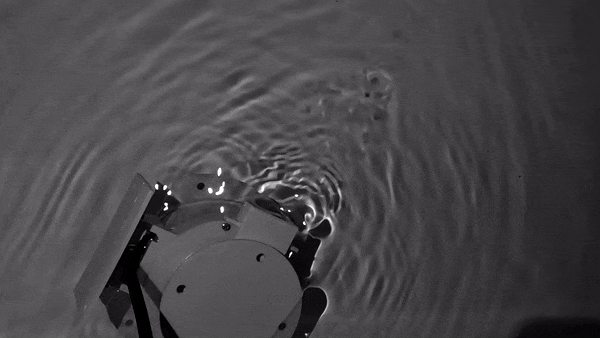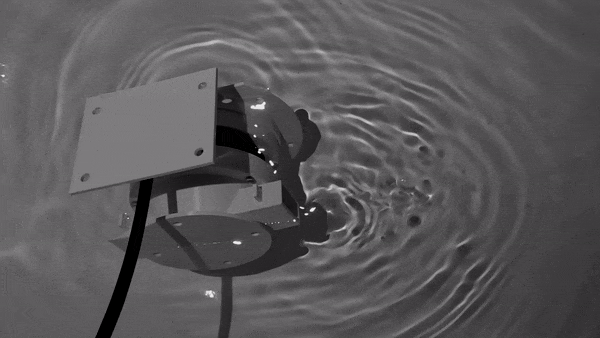The initial thruster was met with difficulties, but did show signs of progress.
The testing conducted was with the larger thruster for the suction tube. Here is a look at the thruster producing movements, albeit slower than anticipated:
The thruster is shuttering, then stops. As it stops, the flow of the water can be seen as redirected by the 3D printed piece. Here it is slowed down 50% and in greyscale with higher contrast:


In the previous project log (https://hackaday.io/project/186901/log/210446-preparation-for-thruster-test), this flow redirector piece was mentioned with a bit of a hypothesis. From this initial test, the results look promising that it could work. Once testing with full strength, this will be able to be known.
The difficulties while testing included:
- Placing in water = thruster stopped. Removing it = thruster started.
- The connections moved when doing so
- Wiggling the connections would produce a shuttering movement from the thruster
- Could be power related? Debugging power would rely on the above point being solved. So, start there first.
- The ESC has an arming sequence. Sending 1500 us pulse to it a few seconds after it starts up is required
- There was no documentation for this
- A power up sequence was determined as well: connect power source to ESC, then connect power to microcontroller.
- The ESCs brown out
- Cause unknown, working on investigating this
- Problem was evident on a CC and CV power supply
- Problem was evident on a 20 C 2650 mAh 4S Lipo battery
- Using a 10 A fuse inline with the Lipo would intermittently not start the ESCs
- Removed this solved the problem
- But comes with a higher risk when working with electronics near water
- Could try a greater fuse value
- Overall setup of the experiment
- Sometimes splashes would sprinkle water close
- Crouched down with laptop and electronics on boxes
- Tried separate container with water, makes a mess
- Dripping faucet into water sound
- Difficulties with smaller thruster for waterjet
- Appears to be out of commission. Need to triple check
Overall, this test demonstrates that the electronics are working to send the correct control signals to the Electronics Speed Controllers (ESCs). There is a bit more work to do on debugging to get it working as expected. The next step is improving the connections.
Onwards!
 EK
EK
Discussions
Become a Hackaday.io Member
Create an account to leave a comment. Already have an account? Log In.